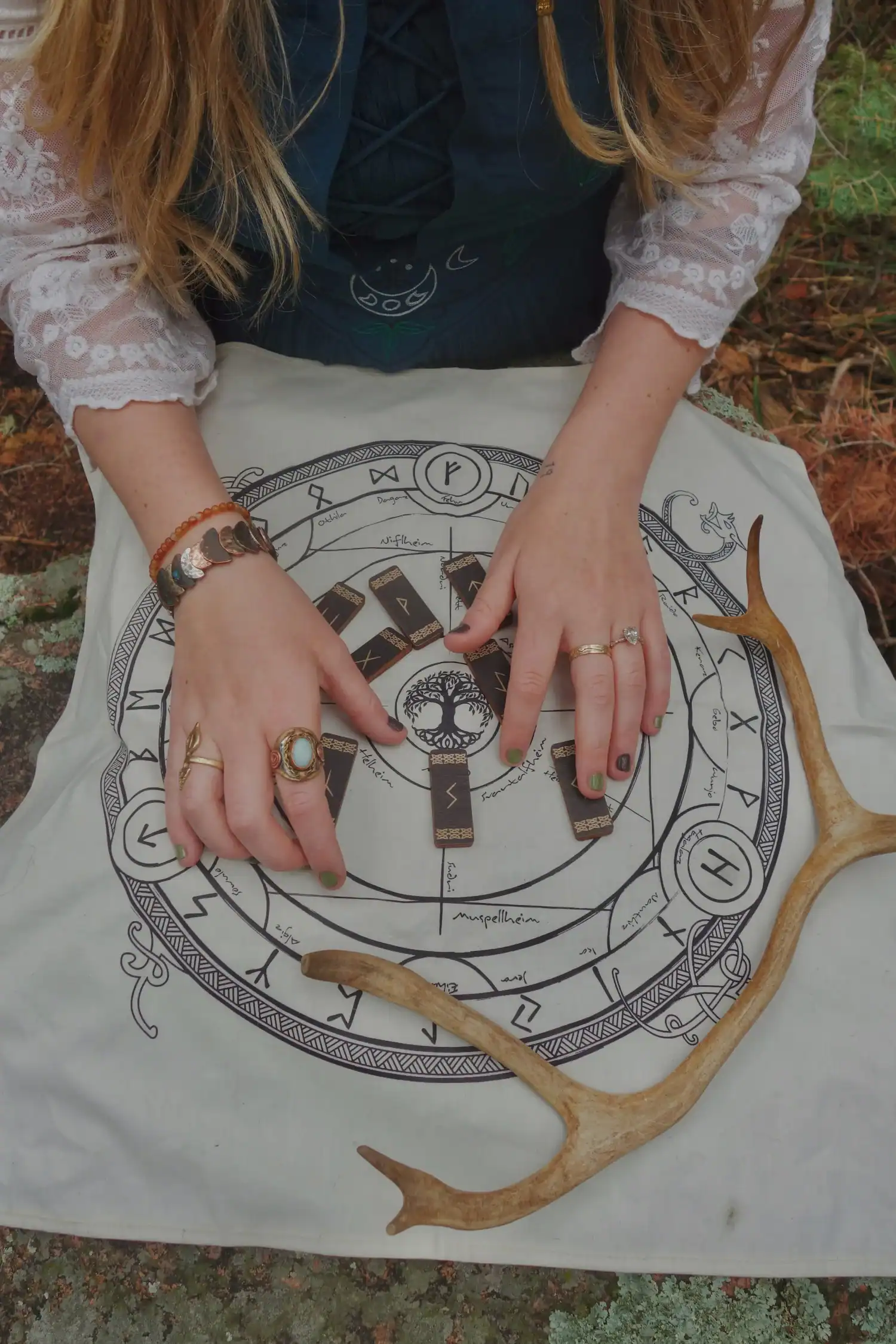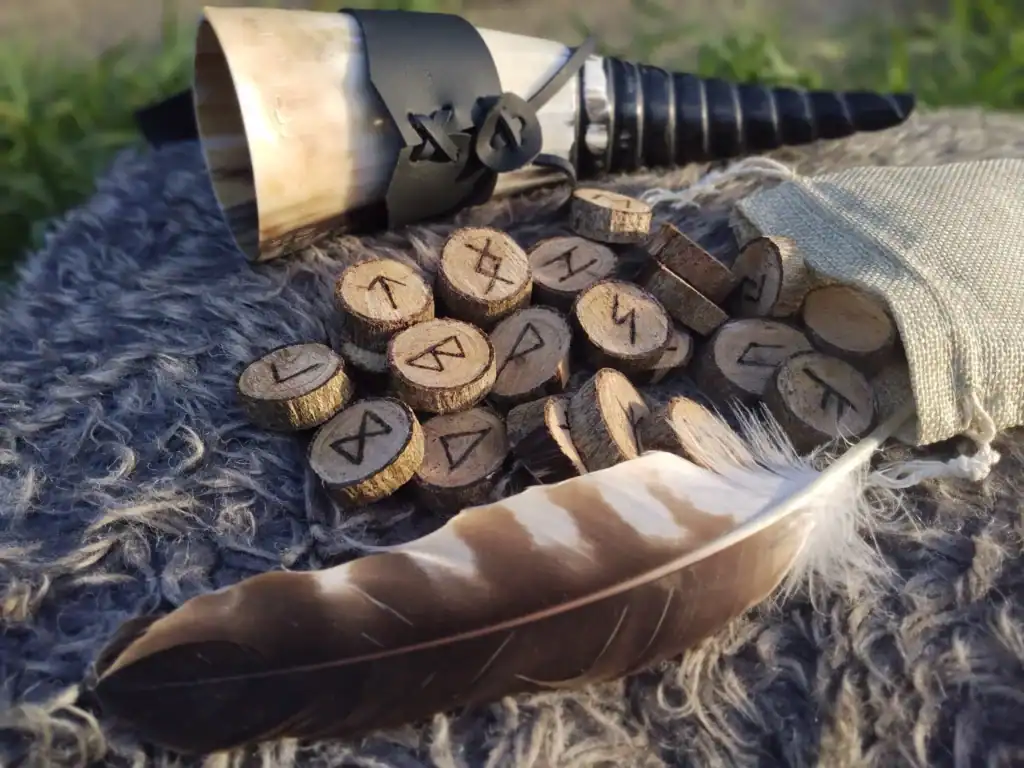
One of the oldest magick symbols that has remained the test of time, the history of runes is mysterious yet filled with incredible storytelling. In order to uncover its past, we must first travel to the Nordic parts of our world Germany, Scandinavia, and Iceland. Join me to delve deeper into the secrets and learn further magick with my runic school.

Germanic tribes including the Goths, Vandals, and others, inhabited the regions of Northern Europe during the early centuries CE. These tribes shared linguistic and cultural ties, which laid the groundwork for the development of the runic script with some influence from contact with Mediterranean tribes. The first runic system created was called the Elder Futhark, emerging around 2nd century CE and consisting of 24 symbols which make up the runes distinguishable sounds and meanings. The term “Elder” separates this set of runes from later evolutions of the runes like the Younger Futhark, and “Futhark” is a translation of the first 6 letters of the runic alphabet. The Elder Futhark was used by Germanic tribes during the Migration Period and the Viking Age.
These Germanic tribes viewed the runes with deep shamanic power, which helped guide their practice and beliefs. Their magick was used for divination, communication with spirits, and influencing the natural world using their distinct energy through sound or writing. Odin, considered the “Allfather” and chief God of the norse panthon had a strong connection to the runes and is attributed to their discovery. From norse mythology and stories, Odin is known for hanging himself from the World Tree, Yggdrasil, for nine nights, during which he attained the knowledge of runes. He then shared this wisdom with humanity and the magick of the runes.
Odin’s quest for wisdom, provide a means for individuals to gain insight into their paths and seek guidance in navigating their destinies. The Norns are typically depicted as three sisters: Urd (past), Verdandi (present), and Skuld (future) reside at the base of the cosmic tree Yggdrasil. They are seen tending to its roots and weaving the threads of fate. They are believed to shape the destinies of gods, humans, and all beings, runes carrying this same symbolic influence. Freyja a prominent goddess of love, war, and magick does not have a direct association with the creation or origin of runes, although her connection to magic, seiðr, and her role as a practitioner of Norse mysticism aligns with the broader use of runes in magical practices. Runes, and their powerful symbols, likely played a role in divination and spellcasting, aspects that resonate with Freyja’s realm of influence, her rune Fehu represents the “F” in the Elder Futhark.

Runes were used in a variety of ways by the tribes and often inscribed on important objects and tools such as weapons, jewelry, tools, and rune stones. These inscriptions served a range of purposes, including memorializing the deceased, conveying information, marking ownership, and invoking protection or blessings from the runes or gods and goddesses associated with them. Individuals would often carve or wear runes as a means of personal empowerment and self-transformation. By choosing specific runes that embodied qualities they sought to cultivate or manifest in their lives, people believed they could align themselves with those desired attributes and tap into their associated energies. They also played a role in various rituals and ceremonies within ancient Germanic and Nordic cultures. They were incorporated into rites related to birth, marriage, death, initiation, and other significant life events.
The Poetic Edda and its contribution of the Hávamál emphasizes the mystical origins of the runes, with Odin’s discovery of them during his self-sacrifice. It also highlights the inherent wisdom and power associated with the runes, suggesting their use for both practical and magical purposes. The specific meanings and uses of individual runes are not extensively elaborated in the Poetic Edda, but the poems provide glimpses into their significance within Norse mythology and magical traditions. The Poetic Edda has served to preserve the poetic and magical aspects of runes, including stories and verses where runic symbolism is present. Especially as the spread of Christianity in Northern Europe began to create its influence causing the use of runes to decline as the Latin alphabet became the dominant writing system. The Church associated runes with paganism and considered them as symbols of superstition and heresy.
The rebirth and revival of runes since this time have allowed runes to become a well regonized and staple practice in the modern era, particularly within contemporary Paganism, Neopaganism, and esoteric communities. Even in pop culture they have made their many appearances in literature, films, and modern artistic expressions. The journey of runes from their origins within the Germanic tribes and Nordic cultures of Northern Europe to their enduring influence is a testament to their cultural and linguistic legacy as well as their magical power. From their early roots among the Germanic tribes to their enduring presence in contemporary spirituality and cultural expressions, runes continue to fascinate, inspire, and support practitioners in their healing, magick work, and rituals. May this exploration ignite a newfound appreciation for the depth and significance of these mystical symbols that have stood the test of time.